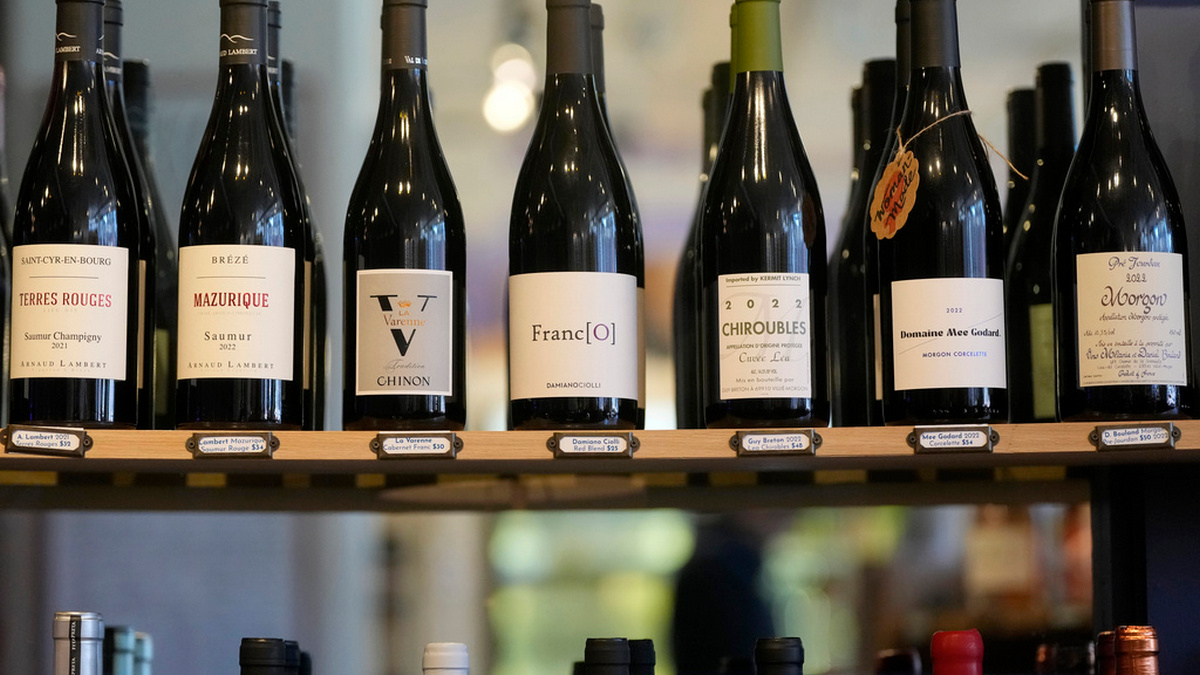The global wine industry recorded its weakest performance in over six decades in 2024, with both consumption and production experiencing steep declines.
The International Organisation of Vine and Wine (OIV) reported that worldwide wine consumption fell to 214.2 million hectolitres—a volume not seen since 1961, when the figure stood at 213.6 million hectolitres. This marked a 3.3 per cent decrease compared to 2023 levels.
This downturn is not a sudden occurrence but the culmination of long-term shifts in lifestyle, drinking habits, economic stress and environmental pressures.
Consumption has contracted by 12 per cent since the 2019–2020 period, indicating a sustained trend rather than a temporary disruption.
The United States, still the largest wine consumer by volume, saw a drop of 5.8 per cent in 2024, reaching 33.3 million hectolitres.
Meanwhile, consumption in Europe — home to nearly half of the global wine market — slid by 2.8 per cent. France, one of the industry’s traditional pillars, experienced a 3.6 per cent drop in domestic wine consumption.
In contrast, Spain and Portugal were among the few countries to buck the trend with marginal increases.
What’s behind the global wine decline?
While consumption has fallen, wine production also shrank in 2024 to 225.8 million hectolitres, the lowest output recorded in more than 60 years.
The decline of 4.8 per cent from the previous year was attributed to a range of climate-related issues, from excessive rainfall in some wine-producing regions to severe drought in others.
These weather extremes have made viticulture increasingly unpredictable and vulnerable.
France experienced one of the most significant setbacks, with its wine output falling by 23 per cent to just 36.1 million hectolitres — its lowest since 1957.
The United States also faced a steep drop in production, down 17.2 per cent to 21.1 million hectolitres, primarily due to prolonged heatwaves.
Italy, however, maintained its position as the leading global producer with 44 million hectolitres, benefiting from both stable domestic consumption and strong demand for its sparkling varieties like prosecco.
Spain followed with 31 million hectolitres, although the overall global production figure was lower than the OIV’s November 2023 forecast of 227–235 million hectolitres.
Adding to this, the total area under vine cultivation contracted by 0.6 per cent to 7.1 million hectares. This marked the fourth year in a row of declining vineyard coverage, with reductions noted across both hemispheres.
Only Italy among the top seven wine-producing nations managed to expand its vineyard area, registering a growth of 0.8 per cent.
What about the trade war?
In addition to environmental challenges, the wine sector has come under financial strain from rising production and retail costs. The OIV noted that the average price per bottle has increased by approximately 30 per cent compared to 2019–20, placing additional pressure on consumer spending.
International trade volumes also took a hit. Global exports were recorded at 99.8 million hectolitres in 2024 — matching the previous year’s figure but falling 5 per cent below the five-year average.
This marked the lowest export volume since 2010. Nonetheless, the market held steady in terms of value, with international wine trade reaching €35.9 billion ($38.9 billion), thanks to premiumisation and stable record-high prices averaging €3.60 per litre.
The United States remained the largest importer by value, purchasing €6.3 billion worth of wine — an increase of 1.6 per cent over 2023. The UK and Germany followed with import values of €4.6 billion and €2.5 billion respectively.
However, geopolitical developments are threatening to undermine this stability. Giorgio Delgrosso, statistics director at the OIV, warned of looming risks from trade policies. Tariffs ordered by the US President Donald Trump could become “another bomb” for the wine industry,” he told AFP.
How are consumption habits affecting wine sales?
The wine sector’s challenges are not just external. Profound shifts in consumer behavior are reshaping the landscape from within. Traditional wine-drinking countries in continental Europe have seen falling consumption for decades.
Earlier this was offset by growth in newer markets such as the UK, USA, China, and parts of the Asia-Pacific. But over the past ten years, even these markets have started to decline in volume.
Key drivers of this shift include a growing emphasis on health, moderation, and controlled social environments. In 2023, one out of every two wine consumers across selected markets reported actively reducing their alcohol intake.
Approximately one-third of these consumers abstain from alcohol entirely on certain occasions, while another 20 per cent prefer low- or no-alcohol alternatives, according to IWSR, a global drinks data and insight provider.
How is competition affecting wine sales?
Another factor reshaping the global wine landscape is rising competition from other alcoholic beverages. Data from IWSR Bevtrac suggests that Millennials and Gen Z consumers show less loyalty to specific drink categories and are more inclined to experiment with cocktails, craft spirits, ready-to-drink mixes, and functional beverages.
“Given the huge changes in the beverage alcohol market in the past decade and a half… wine has faced lots of competition from an increasingly adventurous alcohol consumer,” Richard Halstead, COO Consumer Research at IWSR, said in a July 2024 report.
Even regular wine drinkers are shifting toward less frequent consumption. For instance, in Australia, monthly wine consumption among adults aged 18–24 has halved between 2010 and 2023.
This change is partially attributed to lifestyle transitions, such as the decline of the traditional wine-with-dinner habit.
At the same time, many consumers are choosing to “drink better” rather than more. A growing number are opting for premium wines, such as organic or sparkling varieties, and are more willing to invest in quality experiences over quantity.
Also Read | Why the biggest wine brands are giving up on the business?
This divergence has led to a widening gap between the performance of lower-priced and premium-priced wine segments. While entry-level wines are losing significant volume, the top-tier categories have remained relatively resilient, even if their growth has recently slowed.
AFP quoted wine retailer Nicolas who stated, “People do not drink in a festive way any more and young people consume less than their parents… people drink less, but better.”
With inputs from agencies


)
)
)
)
)
)
)
)
)